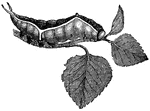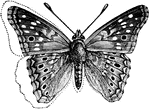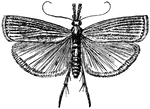This ClipArt gallery offers 486 pictures of insects from the order Lepidoptera, including moths and butterflies in adult, caterpillar, and larval stages.

Death's Head Moth
A moth with markings on the back of its thorax very closely resembling a skull. Usually measures 4 to…
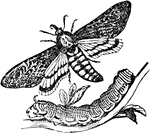
Death's Head Moth
"A species of Hawk-moth or lepidopterous insect of the family Sphingidae, not uncommon in some parts…

Death's Head Moth Caterpillar
"The Death's-head Moth is the European Acherontia Atropos, a hawk-moth with markings on the thorax resembling…
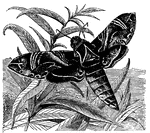
Deilephila (Chaerocampa) Nerii
"The Oleander Hawk-moth is a charming species peculiar to hot countries. It is carried forward by rapid…

Larva of Deilephila (Chaerocampa) Nerii
"When the insect is at rest, the first two rings of its body taper in such a way as to resemble the…
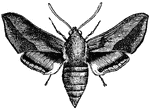
Deilephila Euphorbiae
This butterfly may be found "on the continent of Europe, during the months of June and September, and…

Larva of Deilephila Euphorbiae
"This caterpillar is almost always found on the Cyprus-leafed spurge, at the end of June. Generally,…
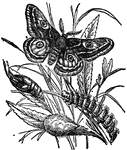
Emperor Moth
"The Emperor Moth, the general color greyish, with white hairs and purple tinges; wings with a hinder…

Fallweb Worm Moth
An illustration of a fallweb worm moth. Fall webworm, Hyphantria cunea, is a moth in the family Arctiidae…

Female Gipsy Moth
Female gipsy moths have large wings that are covered with small scales. The mouth is not able to bite.…
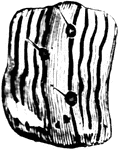
Eight-Spotted Forester
The adult Eight-Spotted Forester (Alypia octomaculata), a moth belonging to the Noctuidae family of…
!["The <em>Procris</em> is a species which fly during the day in damp fields. [It] is plentiful enough between the middle of June and the middle of July."](https://etc.usf.edu/clipart/52500/52522/52522_forester_mth.gif)
The Forester (Procris [Ino] Statices)
"The Procris is a species which fly during the day in damp fields. [It] is plentiful enough…

Female Geometer Moth
The female Fidonia faxoni, an species from the Geometridae family of geometer moths.

Male Geometer Moth
The male Fidonia faxoni, an species from the Geometridae family of geometer moths.
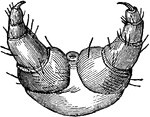
Scaly Legs of the Caterpillar of the Gipsy Moth (Liparis Dispar)
Representation of the scaly legs of the Gipsy moth.

European Grapevine Moth
The European Grapevine Moth (Lobesia botrana) is an insect in the Tortricidae family of tortrix moths.

Hawk Moth
The hawk moth is well known by its habit of poising like a humming bird over the flower from which it…

Hawk Moth
The hawk moth is well known by its habit of poising like a humming bird over the flower from which it…

Hawk Moth
The hawk moth is well known by its habit of poising like a humming bird over the flower from which it…
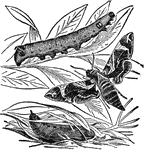
Hawk Moth
"Hawk Moth is a family of the lepidopterous insects, forming along with the clear winged moths and the…
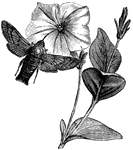
Humming-bird Hawk-moth (Macroglossa Stellatarum)
"In passing from one flower to another, it has brisk, rapid movements; but it remains suspended in the…

Caterpillar of Humming-bird Hawk-moth (Macroglossa Stellatarum)
"Before its metamorphosis, it encloses itself in a shapeless cocoon, made of the debris of leaves held…

Pupa of Humming-bird Hawk-moth (Macroglossa Stellatarum)
"Its skin is so thin and transparent that one can follow it through the phases of transformation to…
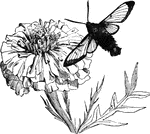
Hummingbird Moth
"A considerable number of insects belonging to Sphingina have transparents wings. Among them is the…

Imperial Moth
The Imperial Moth (Eacles imperialis) is an insect in the Saturniidae family of large and colorful moths.

Lackey Moth
The Lackey moth, Malacosoma neustria, is a member of the genus Malacosoma, common across southern Britain…
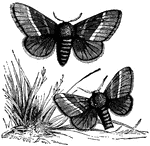
The Lackey (Bombyx Neustria)
"The Lackey derives its name from the color of the caterpillar, which has longitudinal lines of various…

Lappet Moth
Gastropacha hildei is a species of lappet moth in the Lasiocampidae family of eggars, snout moths, and…

Larva of the Lime Hawk Moth (Smerinthus Tiliae)
"The larva is found on the lime and the elm. It buries itself at the foot of the tree on which it has…

Liparis Chrysorrhoea
"The Brown Tailed Moth is also very destructive to trees. The caterpillars live in quantities on the…
!["The caterpillar of the [Lobster Moth] presents a strange appearance, though the moth has nothing remarkable about it."](https://etc.usf.edu/clipart/52700/52755/52755_lobster_larv_mth.gif)
Larva of Lobster Moth
"The caterpillar of the [Lobster Moth] presents a strange appearance, though the moth has nothing remarkable…

Luna Moth
"Among the larger and more splendid moths of our own country is the Luna Moth, or Green Emperor Moth,…

Caterpillar of the Luna Moth
"Among the larger and more splendid moths of our own country is the Luna Moth, or Green Emperor Moth,…



